Fight-or-Flight Response to Danger
Brain, heart, and hormone reaction to peril
The fight-or-flight response is a physiologic reply to a situation considered dangerous based on memory of a previous experience. It is instantaneous reaction. It is also a dramatic example of how the three primary control systems of physiology work in synchrony.
The brain initiates and sustains the fight-or-flight response. Sympathetic activity surges. The heart increases cardiac output ensuring a high level of blood flow to skeletal muscle. Skeletal muscle requires a large a large quantity of oxygen to produce energy for contraction.
Adrenal gland cortisol fosters delivery of high energy substates to contracting muscle, bolstering endurance and stamina. Adrenal epinephrine, also known as adrenalin, increases heart rate and contractility of heart muscle.
Brain’s recognition of danger
Brain’s recognition of danger must occur before a response can begin. Danger is a learned concept. Memory of previous events are necessary to initiate a fight-or-flight response.
Limbic system brain nuclei are the main drivers of the response to a perception of danger. The limbic brain acts before the conscious brain receives the sensory information.
Limbic System
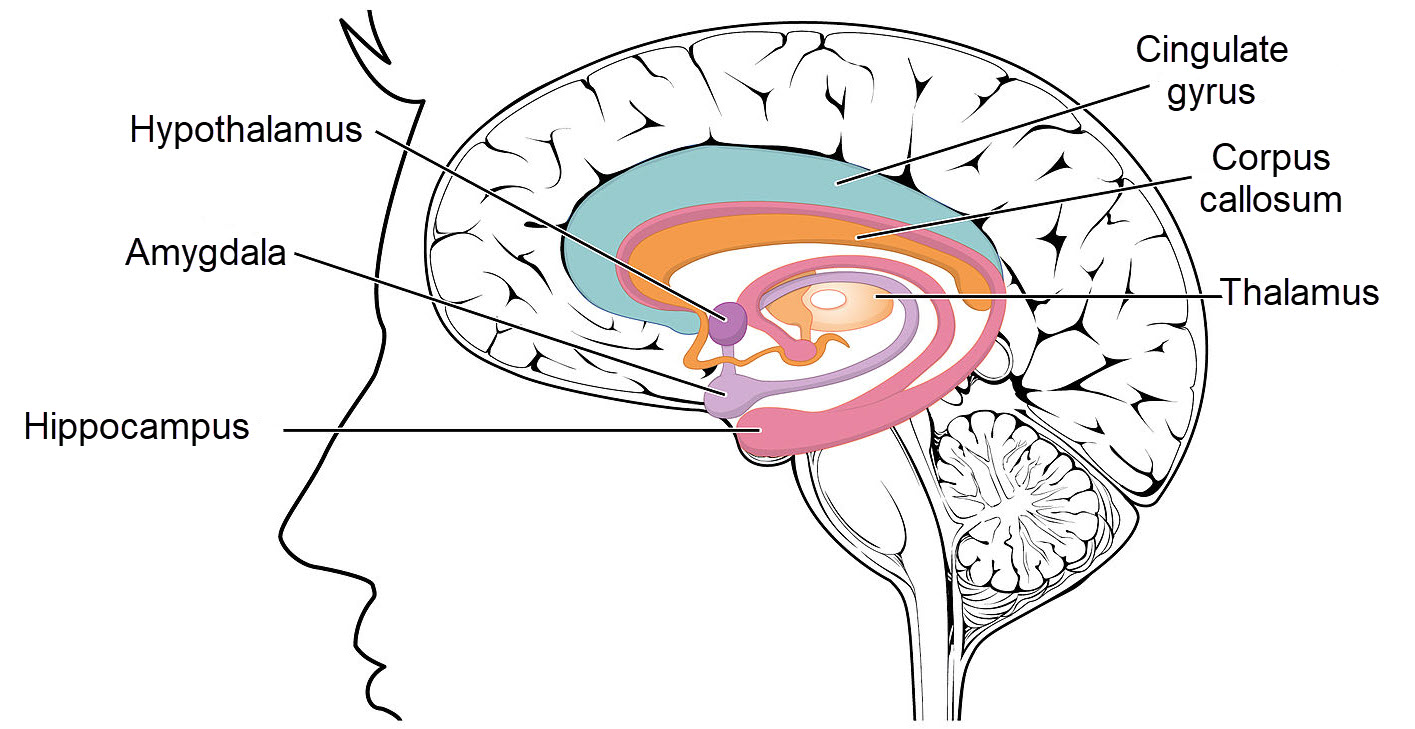
The limbic brain responds to danger before the conscious brain, Open Stax College, Wiki Media Commons
This image illustrates the shape and location of the limbic system’s major structures in the human brain. The limbic structures are paired. One member of each pair lies in each hemisphere.
The thalamus sits above the brain stem. The thalamus classifies sensory information arriving from brain stem nuclei and the retina. The thalamus relays the new information to the to appropriate subcortical and cortical brain areas.
The hypothalamus lies immediately below the thalamus. Among other pursuits, hypothalamic nuclei regulate release of pituitary trophic hormones and participates in control of the autonomic nervous system.
The hippocampus cortical neurons specialize in episodic memory formation. The memory it produces combines the quality of an experience. It records what, where, and when elements of an event
The amygdala is located near the hippocampus in the frontal portion of the temporal lobes of the brain The amygdala encodes, stores, and retrieves autobiographical memories. It attaches emotional significance to them. Autobiographical memories are events in a person’s life.
The cingulate gyrus also participates in emotion formation and processing. It is important for linking motivation and behavior.
Visual triggers of danger
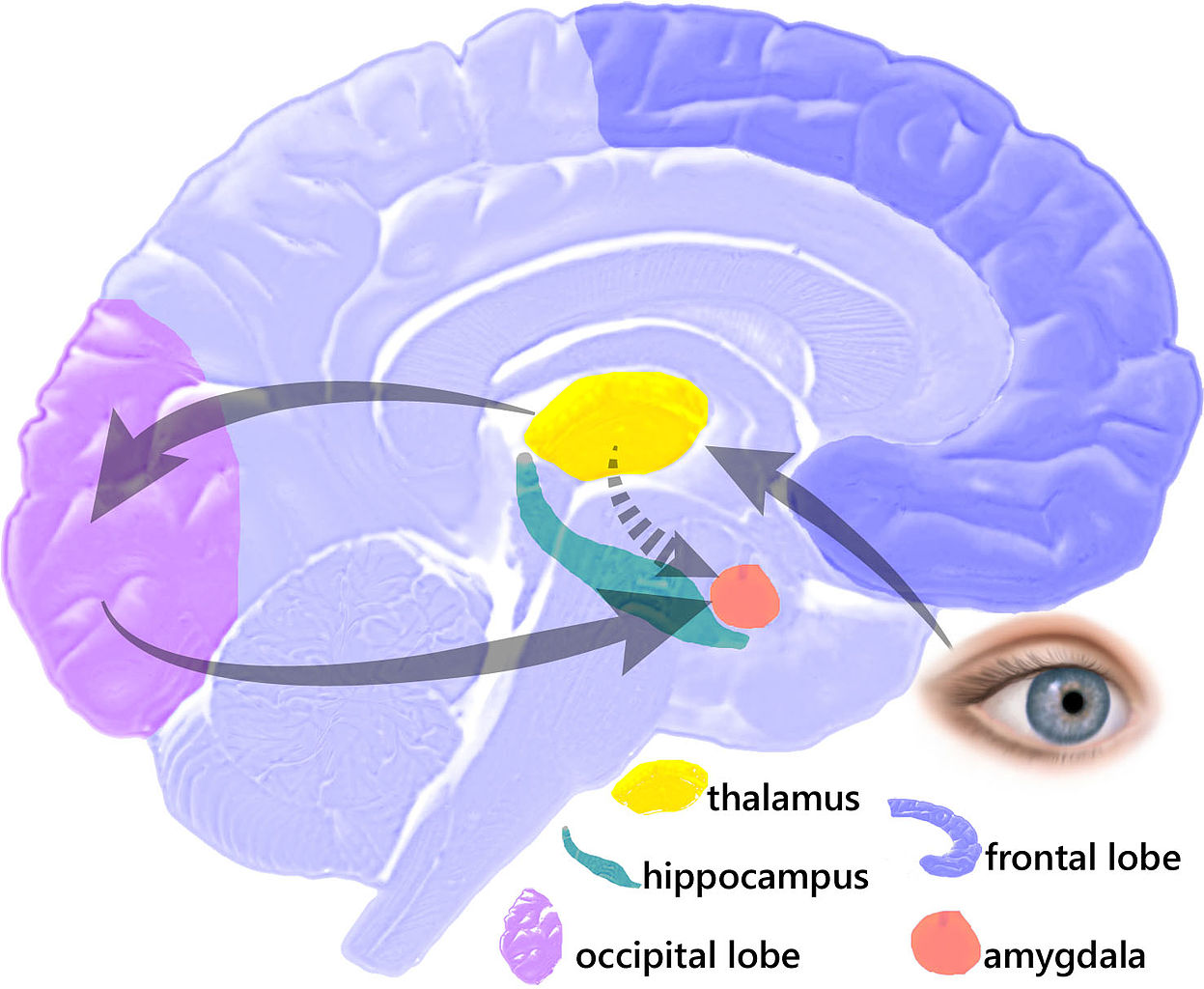
When amygdala recognizes danger it sets in motion a fight-or-flight response, Manos Hacker, Wiki Media Commons
This illustration demonstrates one way the brain may detect danger, through a visual trigger.
The dark blue area of this drawing of the left hemisphere represents the frontal lobe of the brain. The frontal lobe is where conscious decisions are made. The purple area is the occipital cortex where visual signals from the retina are converted to a picture.
Sensory information from the retina travels first to the thalamus shown in yellow. The thalamus processes the visual data and sends it simultaneously to the occipital cortex, hypothalamus, and amygdala.
If the visual information aligns with a memory stored in the amygdala that signals danger, the amygdala takes over the brain’s response. The response of the amygdala occurs before the visual information reaches the frontal cortex.
The amygdala alerts the hypothalamus of the danger. The hypothalamus signals to brain stem nuclei that regulate the autonomic nervous system to increase sympathetic neural activity. The hypothalamus also signals the hormone secreting cells of the anterior pituitary gland to release adrenocorticotropic hormone ACTH.
A widespread brain process named central command anticipates the need for exercise. It signals the cardiovascular system to instantly increase heart rate and the respiratory system to improve lung ventilation rate.
Cardiovascular support for fight-or-flight
The brain-signaled increase in heart rate increases cardiac output. High cardiac output is needed to supply skeletal muscles with sufficient oxygen to maintain a high level of metabolism for ATP production.
Cardiovascular activity during fight-or-flight is literally exercise physiology on adrenalin and steroid. Interaction of the brain and cardiovascular system during regular exercise can be found by clicking here.
Sympathetic support of fight-or-flight
Hypothalamic signaling to the autonomic brain stem nuclei brings sympathetic neural activity to a high level during the fight-or-flight response.
Sympathetic activity relaxes the muscles of the bronchi to facilitate air flow and heightened lung ventilation. It increases heart rate by increasing the firing rate of the cardiac pacemaker nodes. And it elevates the force on placed on blood by contraction of the cardiac muscle.
At the liver, elevated sympathetic activity stimulates glucose production and release. Glucose is the main source of quick energy for skeletal muscle and the brain.
Enhanced sympathetic activity also releases adrenalin and noradrenalin from the adrenal gland. Adrenalin and noradrenalin enhance the effectiveness of the sympathetic neurotransmitter at its synapses. Adrenalin further accelerates heart rate, strengthens contractility of cardiac muscle, and elevates cardiac output.
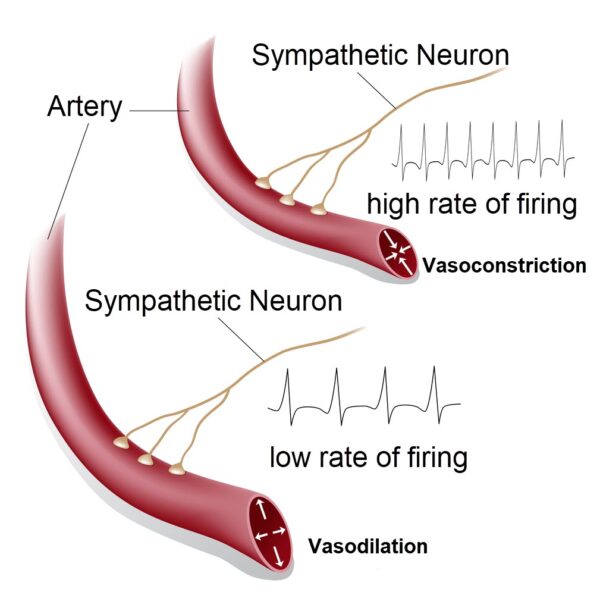
A high rate of sympathetic firing constricts the arteries, illustration by Alila Medical Media, Shutterstock.com
At the arteries, the high rate of sympathetic activity causes vasoconstriction, except for those vessels servicing the heart and skeletal muscle. Perfusion of active skeletal muscle remains high during fight-or-flight, because metabolic end products, lactic acid and carbon dioxide, overcome the effectiveness of the sympathetic neurotransmitter.
Steroid support of fight-or-flight
The steroid hormone cortisol supports the fight-or-flight response. Signaling by the hypothalamus is responsible for the rise in cortisol. However, in this case the hypothalamus uses a hormonal signal rather than a neural signal to accomplish its goal.
The hypothalamic neurons release a hormone named corticotrophin releasing hormone, CRH, into the capillaries of the anterior pituitary. The pituitary gland responds by releasing adrenocorticotropic hormone, ACTH into the systemic circulation. At the adrenal gland, ACTH cause release of a large amount of cortisol.
The high level of blood cortisol increases blood pressure. Higher blood pressure enhances capillary exchange of nutrients and metabolic waste products. Elevated cortisol also supports the use of fatty acids for muscle metabolism. Fatty acid metabolism requires more oxygen than breakdown of glucose, but it produces more ATP. An adequate supply of ATP maintains skeletal muscle contraction, providing stamina and endurance.
Summary of fight-or- flight physiology
- The amygdala of the brain recognizes danger based upon memory of previous events.
- The amygdala signals the hypothalamus.
- The hypothalamus upregulates the sympathetic nervous system.
- Heart rate increases, the bronchial tree relaxes, ventilation rate increases, liver increases production and release of glucose, adrenalin and noradrenalin released from the adrenal gland.
- The hypothalamus in endocrine mode, signals the pituitary to release ACTH, ACTH causes release of a high amount of adrenal cortisol.
- Cortisol increases blood pressure facilitating blood capillary exchange of nutrients and metabolic waste products.
- Cortisol encourages release of and use of fatty acids for skeletal muscle ATP production.
- Elevated muscle ATP favors muscle stamina and endurance.
Further Reading
Tips for How to Study the Cardiovascular System
Do you have questions?
Send me an email with your questions at DrReece@MedicalScienceNavigator.com or put them in the comment box. I always read my mail and answer it.
 Margaret Thompson Reece PhD, physiologist, former Senior Scientist and Laboratory Director at academic medical centers in California, New York and Massachusetts is now Manager at Reece Biomedical Consulting LLC.
Margaret Thompson Reece PhD, physiologist, former Senior Scientist and Laboratory Director at academic medical centers in California, New York and Massachusetts is now Manager at Reece Biomedical Consulting LLC.
She taught physiology for over 30 years to undergraduate and graduate students, at two- and four-year colleges, in the classroom and in the research laboratory. Her books “Physiology: Custom-Designed Chemistry”, “Inside the Closed World of the Brain”, and her online course “30-Day Challenge: Craft Your Plan for Learning Physiology”, and “Busy Student’s Anatomy & Physiology Study Journal” are created for those planning a career in healthcare. More about her books is available at https://www.amazon.com/author/margaretreece. You may contact Dr. Reece at DrReece@MedicalScienceNavigator.com, or on LinkedIn.
Dr. Reece offers a free 30 minute “how-to-get-started” phone conference to students struggling with human anatomy and physiology. Schedule an appointment by mail at DrReece@MedicalScienceNavigator.com.


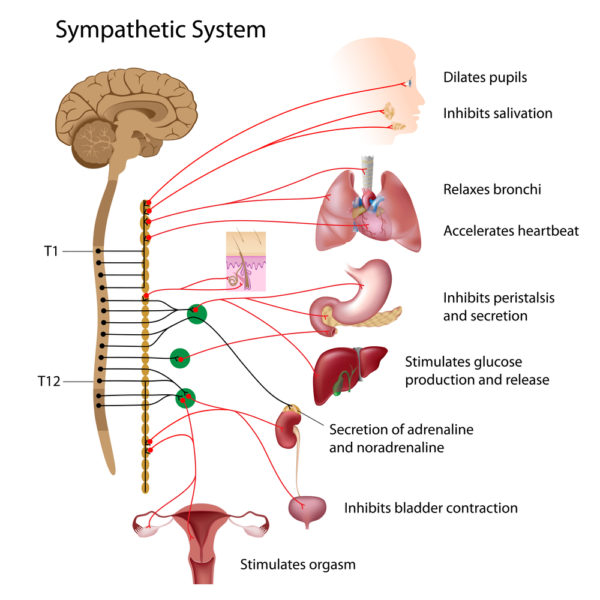
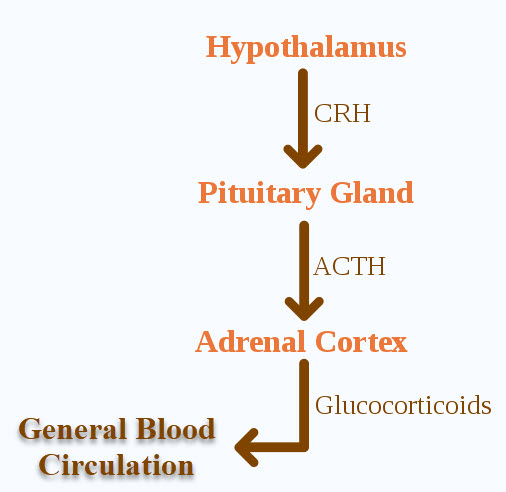
Comments
Fight-or-Flight Response to Danger — No Comments
HTML tags allowed in your comment: <a href="" title=""> <abbr title=""> <acronym title=""> <b> <blockquote cite=""> <cite> <code> <del datetime=""> <em> <i> <q cite=""> <s> <strike> <strong>